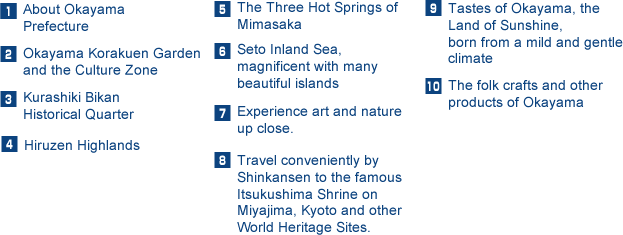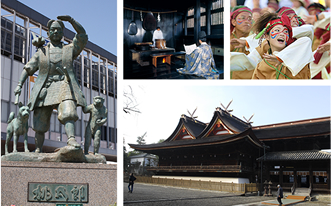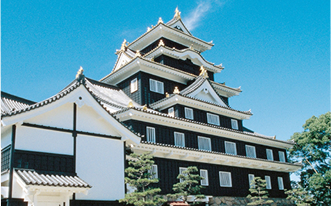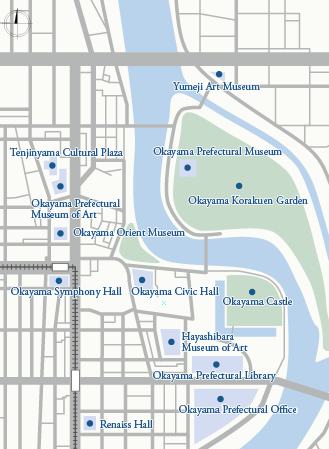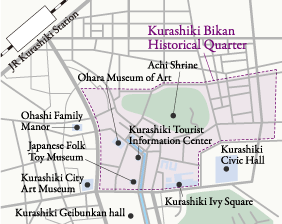Okayama, a major city in size, offers the benefits of a metropolis in a compact atmosphere.
Okayama is one of Japan’s major cities, with a population of about 720,000. While offering the full range of metropolitan functions such as housing, places of employment, schools, hospitals and recreation areas, the central area has also developed as a pleasant place to live, graced by water and green spaces.
The Legend of Momotaro can still be felt today in this city that is rich in history and culture.
Historical sites and cultural treasures that bespeak Okayama’s rich history and culture can still be found within the city today, including the sanctuary of Kibitsu Shrine (a national treasure), built in an architectural style found nowhere else in Japan. Okayama is also famous as the setting for one of Japan’s most well-known folk tales, the Legend of Momotaro.




